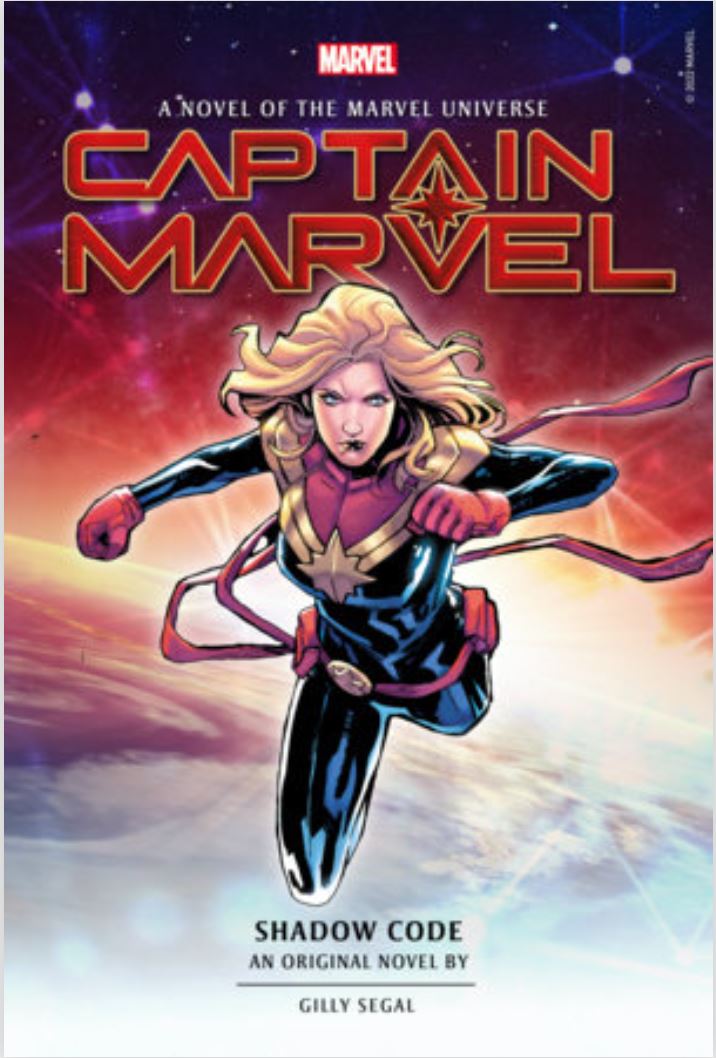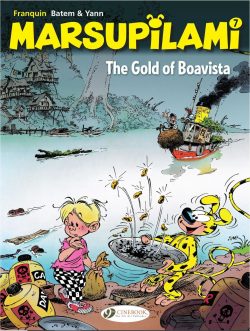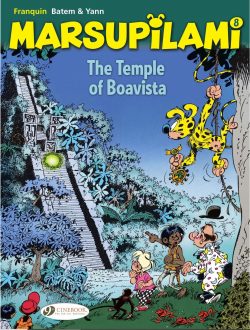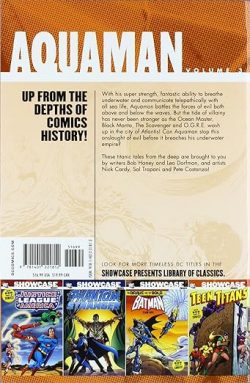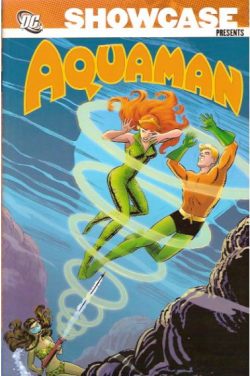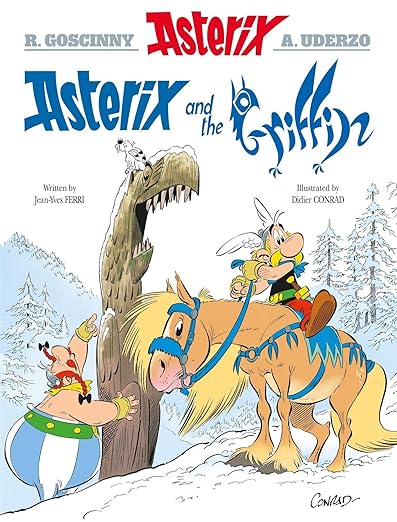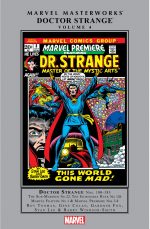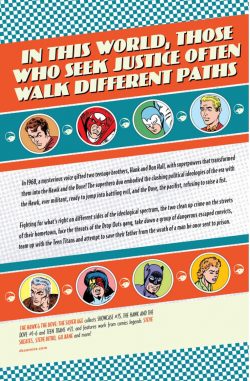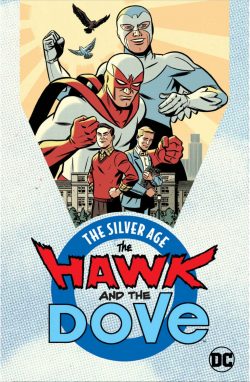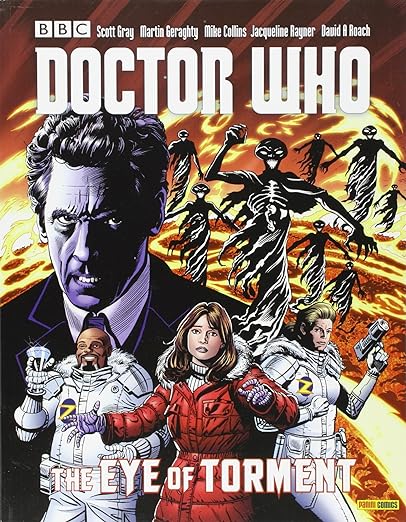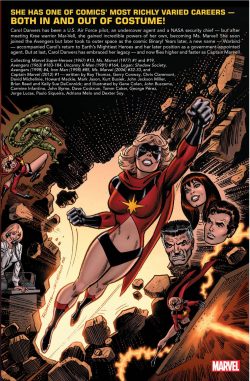
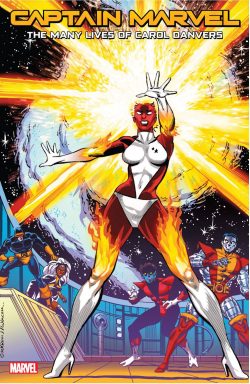
By Roy Thomas, Gerry Conway, Chris Claremont, David Michelinie, Howard Mackie & Mark Jason, Kurt Busiek, John Jackson Miller, Brian Reed, Kelly Sue DeConnick, Gene Colan, John Buscema, Carmine Infantino, John Byrne, Dave Cockrum, Tomm Coker, George Pérez, Jorge Lucas, Paulo Siqueira, Adriana Melo, Dexter Soy & various (MARVEL)
ISBN: 978-1-3029-2506-2 (TBP/Digital edition)
Win’s Christmas Gift Recommendation: A Miraculous Ascension to Marvel At… 8/10
In comic book terms, the soubriquet “Marvel” carries a lot of baggage and clout, and has been attached to a wide number of vastly differing characters over many decades. In 2014, it was inherited by comics’ first mainstream first rank Muslim superhero, albeit employing the third iteration of pre-existing designation Ms. Marvel.
Career soldier, former spy and occasional journalist Carol Danvers – who rivals Henry Pym in number of secret identities – having been Binary, Warbird, Ms. Marvel again and ultimately Captain Marvel – originated the role when her Kree-based abilities first manifested. She experienced a turbulent superhero career and was lost in space when Sharon Ventura became a second, unrelated Ms. Marvel. This iteration gained her powers from the villainous Power Broker, and after briefly joining the Fantastic Four, was mutated by cosmic ray exposure into a She-Thing…
Debuting in a sly cameo in Captain Marvel (volume 7 #14, September 2013) and bolstered by a subsequent teaser in #17, Kamala Khan was the third to use the codename. She properly launched in full fight mode in a tantalising short episode (All-New MarvelNow! Point One #1) chronologically set just after her origin and opening exploit. We’ll get to her another day soon, but isn’t it nice to see her annoying trolls on screen as well as in print?
Here we’re focusing on Carol Danvers in many of her multifarious endeavours, glimpsed via a wide set of comics snapshots spanning cover-dates March 1968 to September 2012, and comprising Marvel Super-Heroes #13, Ms. Marvel #1, 19, Avengers #183-184, Uncanny X-Men #164, Logan: Shadow Society, Avengers (1998) #4, Iron Man (1998) #85, Ms. Marvel (2006) #32-33, and Captain Marvel (2012) #1.
She began as a supporting character as the House of Ideas pounced on finally vacant property title Captain Marvel and debuted in the second instalment. Marvel Super-Heroes #13 picks up where the previous issue ended. That was ‘The Coming of Captain Marvel!’ – derived directly from Fantastic Four #64-65, wherein the quartet defeated a super-advanced Sentry robot marooned on Earth by a mythical and primordial alien race the Kree. They didn’t stay mysterious for long and despatched a mission to spy on us…
Dispatching a surveillance mission, the Kree had to know everything about us. Unfortunately, the agent they chose – Captain Mar-Vell – was a man of conscience, whilst his commanding officer Colonel Yon-Rogg was his ruthless rival for the love of the ship’s medical officer Una. No sooner has the dutiful operative made a tentative planet-fall and clashed with the US Army from a local missile base than the instalment – and this preamble – ends.
We begin here as Roy Thomas, Gene Colan & Paul Reinman took over for ‘Where Stalks the Sentry!’ as the spy assumes the identity of recently killed scientist Walter Lawson to infiltrate that military base and immediately arouses the suspicions of security Chief Carol Danvers. He is horrified to discover the Earthlings are storing the Sentry defeated by the FF on site. Yon-Rogg, sensing an opportunity, reactivates the deadly mechanoid. As it goes on a rampage, only Mar-Vell stands in its path…
Over many months Mar-Vell and Danvers sparred and shuffled until she became a collateral casualty in a devastating battle between the now-defected alien and Yon-Rogg in Captain Marvel #18 (November 1969). Caught in a climactic explosion of alien technology (latterly revealed to have altered her biology), she pretty much vanished until revived in Ms. Marvel #1 (January 1977). Crafted by Gerry Conway, John Buscema & Joe Sinnott, ‘This Woman, This Warrior!’ heralded a new chapter for the company and the industry…
Here irrepressible and partially amnesiac Danvers has relocated to New York to become editor of “Woman”: a new magazine for modern misses published by Daily Bugle owner J. Jonah Jameson. Never having fully recovered from her near-death experience, Danvers left the military and drifted into writing, slowly growing in confidence until the irascible publisher made her an offer she couldn’t refuse…
At the same time as Carol is getting her feet under a desk, a mysterious new masked “heroine” (sorry, it was the 70s!) started appearing and as rapidly vanishing, such as when she pitches up to battle the sinister Scorpion as he perpetrates a brutal bank raid.
The villain narrowly escapes to rendezvous with Professor Kerwin Korwin of Advanced Idea Mechanics. The skeevy savant promised to increase Scorpion’s powers and allow him to take long-delayed revenge on Jameson – whom the demented thug blames for his freakish condition…
Danvers has been having premonitions and blackouts since the final clash between Mar-Vell and Yon-Rogg and has no idea she transforms into Ms. Marvel during fugue state episodes. Her latest vision-flash occurs too late to save Jameson from abduction, but her “Seventh Sense” does allow her to track the villain before her unwitting new boss is injured, whilst her incredible physical powers and knowledge of Kree combat techniques enable her to easily trounce the maniac.
Danvers eventually reconciles her split personality to become a frontline superhero and is targeted by shape-shifting mutant Mystique in a raid on S.H.I.E.L.D. to purloin a new super-weapon. This triggers a blockbuster battle and features the beginnings of a deadly plot originating at the heart of the distant Kree Imperium…
The scheme culminates with our third tale as ‘Mirror, Mirror!’ (Chris Claremont, Carmine Infantino & Bob McLeod) sees the Kree Supreme Intelligence attempts to reinvigorate his race’s stalled evolutionary path by kidnapping Earth/Kree hybrid Carol Danvers. However, with both her and Captain Marvel hitting hard against his emissary Ronan the Accuser, eventually the Supremor and his plotters take the hint and go home empty-handed…
Avengers #183-184 from May and June 1979 then see her seconded onto the superteam by government spook Henry Peter Gyrich just in time to face ‘The Redoubtable Return of Crusher Creel!’ Courtesy of David Michelinie, John Byrne, Klaus Janson & D(iverse) Hands, a breathtaking all-action extravaganza sees Ms. Marvel replace the Scarlet Witch just as the formidable Absorbing Man decides to leave the country and quit being thrashed by heroes. Sadly, his departure plans include kidnapping a young woman “for company”, leading to a cataclysmic showdown with the heroes resulting in carnage, chaos and a ‘Death on the Hudson!’…
Carol was later attacked by young mutant Rogue, and permanently lost her powers and memory. Taken under the X-Men’s wing she went into space with The Starjammers and was eventually reborn as cosmic-powered adventurer Binary: the exact how of which can be seen in Claremont, Dave Cockrum & Bob Wiacek’s ‘Binary Star!’ from Uncanny X-Men #164 (December 1982)…
Jumping to December 1995, one-shot Logan: Shadow Society – by Howard Mackie, Mark Jason, Tomm Coker, Keith Aiken, Octavio Cariello & Christie Scheele – delves into Danvers’ early career as set pre-debut of the Fantastic Four. She links up with a sometime associate to counter a new and growing menace… something called “mutants”. She has no idea about the truth of her savagely efficient partner Logan but certainly understands the threat level of the killed called Sabretooth…
Following the Heroes Return event of 1997, a new iteration of The Avengers formed and in #4 (May 1998), Kurt Busiek, George Pérez, Al Vey & Wiacek decree there are ‘Too Many Avengers!’ prompting a paring down by the founders and admission of Carol in her newest alter ego Warbird, just in time to trounce a few old foes, whilst Iron Man #85/430 (August 2004, by John Jackson Miller, Jorge Lucas &Antonio Fabela), sees the beginning of the end in a prologue to the Avengers Disassembled event as Warbird is caught up in the breakdown…
Brian Reed, Paulo Siqueira, Adriana Melo, Amilton Santos, Mariah Benes & Chris Sotomayor then collaborate on a revelatory dip into the early life of USAF officer Major Carol Danvers as a chance encounter with boy genius Tony Stark gets her captured by the Taliban, tortured and turned into a secret agent in ‘Ascension’ and ‘Vitamin’: a brace of epic gung ho Top Gun meets Jason Bourne tales from Ms. Marvel (2006) #32-33 (December 2008 & January 2009), before this collection reaches its logical conclusion with her being officially proclaimed “Earth’s Mightiest Hero” in Captain Marvel #1 (September 2012) as Kelley Sue DeConnick, Dexter Soy & Joe Caramagna depict Carol’s embracing her past lives to accept the legacy, responsibility and rank of her universe-saving Kree predecessor…
With covers and variants by Colan, John Romita & Dick Giordano, John Romita Jr. & Joe Rubinstein, Pérez & Terry Austin, Cockrum & Wiacek, Coker & Aiken, Pérez & Tom Smith, Steve Epting & Laura Martin, David Yardin & Rain Berado, Ed McGuinness, Dexter Vine, Javie Rodriguez and Adi Granov, plus dozens of sketches, layout and original art pages, this epic retrospective is a superb short cut to decades of astounding adventure.
In conjunction with sister volume Captain Marvel vs Rogue (patience!, we’ll get to that one too) these tales are entertaining, often groundbreaking and painfully patronising (occasionally at the same time), but nonetheless, detail exactly how Ms. Marvel in all her incarnations and against all odds, grew into the modern Marvel icon of affirmative womanhood we see today.
In both comics and on-screen, Carol Danvers is Marvel’s paramount female symbol and role model. These exploits are a valuable grounding of the contemporary champion but also stand on their own as intriguing examples of the inevitable fall of even the staunchest of male bastions: superhero sagas…
© 2020 MARVEL.




